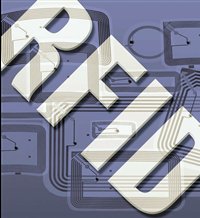What is RFID?
Nowadays, it is necessary to automatically identify elements and collect relevant data, without human intervention, for data entry in many fields of industry, science; social and services activities. In response to this need, up to now, numerous technologies have been designed and implemented
Nowadays, it is necessary to automatically identify elements and collect relevant data, without human intervention, for data entry in many fields of industry, science; social and services activities. In response to this need, up to now, numerous technologies have been designed and implemented
Automatic identification, or auto ID for short, is the broad term given to a host of technologies that are used to help machines identify objects, people or animals. The aim of most auto-ID systems is to increase efficiency, reduce data entry errors, and free up staff to perform more value-added functions, such as providing better customer service
There are a host of technologies that so far have been developed and designed for automatic identification. These include bar codes, smart cards, voice recognition, some biometric technologies, optical character recognition (OCR), and radio frequency identification (RFID)
We’ll be more familiar with RFID technology in the following
Basic familiarity with RFID technology
Let’s learn more about RFID technology by reviewing together several definitions of it
RFID technology provides the possibility of automatic identification; managing and tracking objects, people or animals using RF based communication. RFID performance is dependent on two machines: tag and code reader; these use radio waves for communication between together
Radio frequency identification, or RFID, is a generic term for technologies that use radio waves to automatically identify people or objects. There are several methods of identification, but the most common is to store a serial number that identifies a person or object, on a microchip that is attached to an antenna (the chip and the antenna together are called an RFID transponder or an RFID tag). The antenna enables the chip to transmit the identification information to a reader. The reader converts the radio waves reflected back from the RFID tag into digital information that can then be passed on to computers that can make use of it
RFID offers a major platform for identifying objects, collecting data and object management. The above platform includes a set of data carrier technologies and products that help in exchanging data between carrier and data management system over a radio frequency (RF) link
RFID tags are implemented using a frequency based on system requirements (reading range and environment). The tags are implemented as active (having a battery) or passive (tags without batteries). A passive RFID tag draws power from field created by the reader and uses it to power the microchip’s circuits
RFID reader is connected usually to a computer, and has a similar role with “barcode scanner”
The responsibility for necessary communication between information system and RFID tags rests with RFID reader

